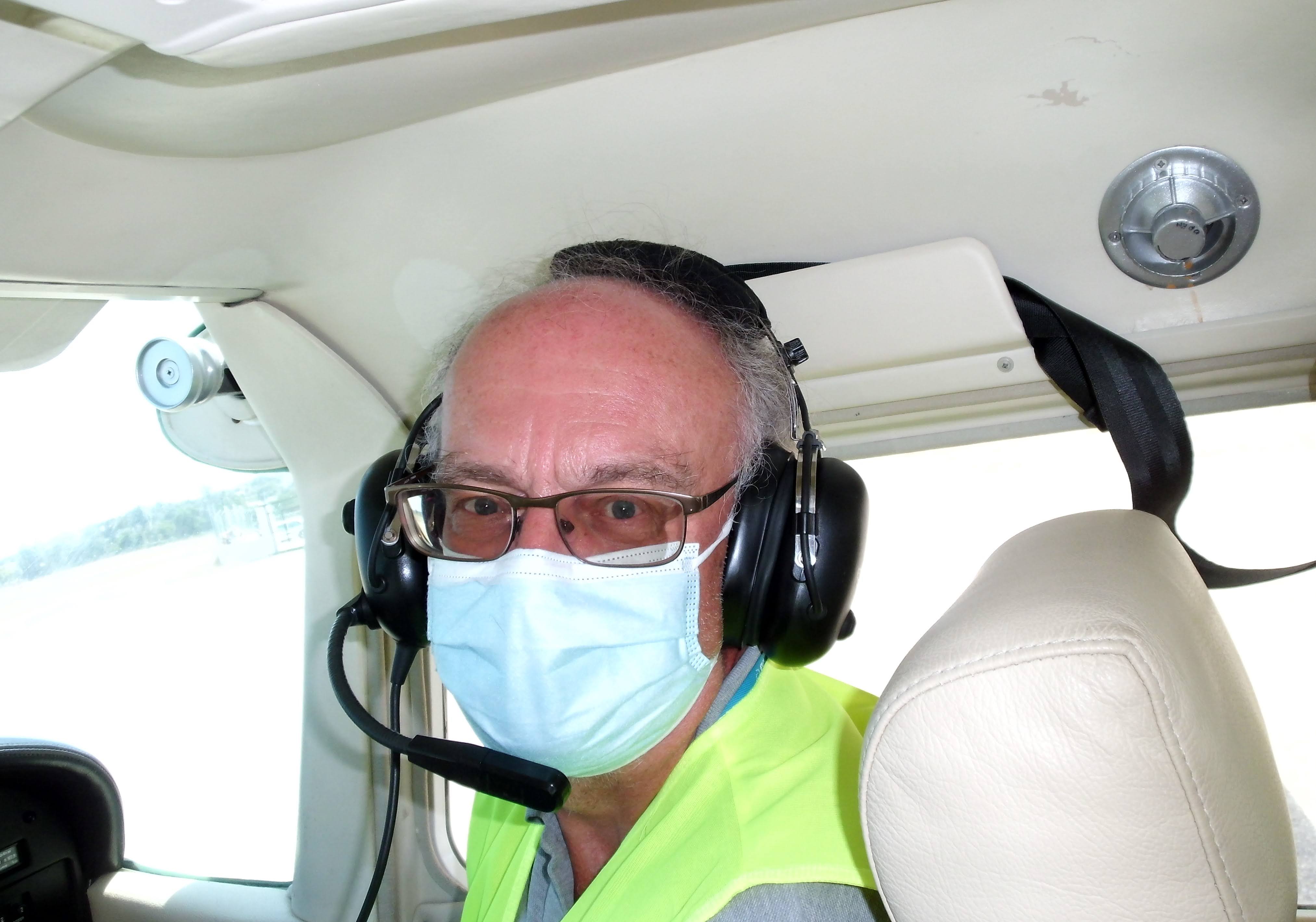King's Cup - 1930
-
Probyn, Harold Melsome
Wing-Cmdr Harold Melsome Probyn 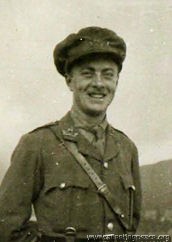 1916, when a 2nd Lieut in the 2/5th Royal Warwickshire Regiment, aged 25
1916, when a 2nd Lieut in the 2/5th Royal Warwickshire Regiment, aged 25from Lancashire, later an Air Commodore; retired to Kenya.
Felt that aviation wasn't as much fun after the invention of the parachute.
In 1927-8 he entered as 'Harold Brooklyn', and 1929-31 he entered as 'J Wellworth'; I have no idea why.
-
Richardson, Llewellyn George
Lieut Llewellyn George Richardson, RN 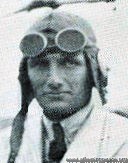
photo: 1930
Royal Navy 1922-1951, but RAF 1925-36
-
Rose, Thomas
Flt-Lt Thomas 'Tommy' Rose DFC 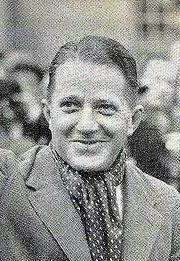 1936
1936b. 27 Jan 1895 - Alton, Hants
One of the best-known racing and pioneering pilots of the 30s.
His father, John, was a farm bailiff at Basing Farm, Froxfield, nr Petersfield, Hants. After working briefly as a bank clerk, Tommy joined the Royal Navy in 1914 and then transferred to the R.F.C. in June 1917.
"He was shot down three times, but escaped each time. He was awarded the DFC for his work with the fighter squadron in which Billy Bishop, VC, served. "
m. 1925 Margaret Elizabeth [Ashford], [divorced 1938]
Retired from the RAF in 1926 with the rank of Flight-Lieutenant.
In December 1931, he made an unsuccessful attempt on the UK-Cape record, and then flew back "by easy stages".
From Oct 1933, Manager and Chief Instructor at Sywell.
"TOMMY ROSE is gone from Sywell, but not forgotten. As sales manager for Messrs. Phillips and Powis, the Reading aircraft manufacturers, he spends quite a lot of time flying round the country. Last week his photograph was 'splashed' in all the national daily papers, greeting Mr. H. L. Brook, the Yorkshireman airman, on his arrival at Croydon after breaking the Australia-England record previously held by Jim Mollison. There was no mistaking Tommy’s famous sports jacket and boyish grin!
Mr. Rose, the way, left a last impression at Sywell. Shortly before leaving, when the new gate was being erected in front of the clubhouse, he carefully placed his foot in the wet cement and printed beside it 'Tom Rose' with a trowel. The cement hardened, and the 'Rose' mark is there for posterity to reverence! Hundreds of feet have since trod the hallowed spot." - Northampton Mercury, 12 April 1935
Competed in the King's Cup six times, winning it in 1935...
![Kings Cup 1938 Tommy Rose [0122-0170]](/images/gallery/air%20races/preview/333s333/Kings%20Cup%201938%20Tommy%20Rose%20%5B0122-0170%5D.jpg)
© The Royal Aero Club [0122-0170]
... and coming second in 1934 and 1936.
[The 1935 King's Cup itself recently sold at auction for £3,900:
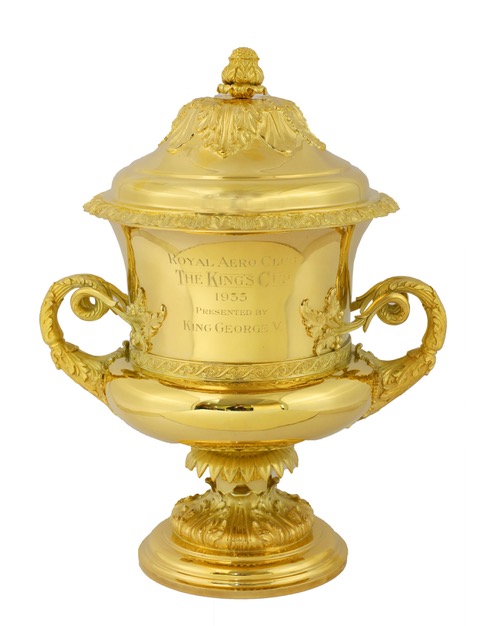
Photo kindly supplied by Sarah Chambers, reproduced by kind permission of Sworders Fine Art Auctioneers.]
He became a national hero in March 1936 after his flight to Cape Town and back; "he can now claim to have made the fastest time for the trip both out and home. His new record is 6 days 6 hr. 57 min. (he got to the Cape in 89 hr. 37 min.), which beats F/O David Llewellyn's time—the previous best—by 5 hr. 6 min."
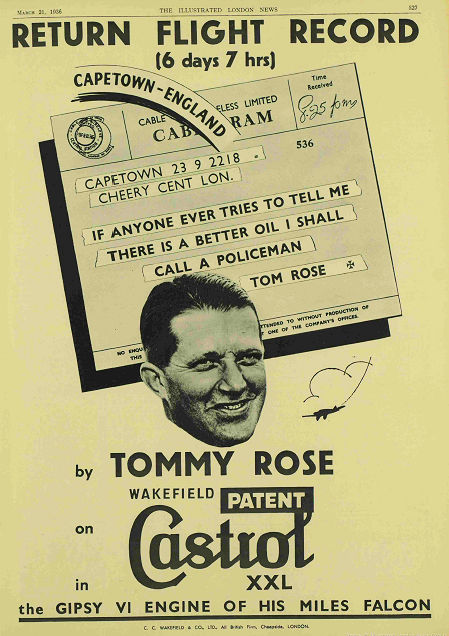
After the flight to the Cape, he had tea with the Prime Minister, General Hcrtzog, and also saw General Smuts. However, he was charmingly modest about his achievements:
"TOMMY ROSE ON LONG FLIGHTS
SAYS RECORD ATTEMPTS ARE 'LARGELY BUNKUM'
This flight business is bunkum! The authority for that picturesquely phrased piece of information is Flight- Lieutenant Tommy Rose, and he should know, for he hit the headlines in all the national newspapers when he smashed all records for the flight from London to the Cape. In a talk to the Round Table at Stewart's Cafe on Monday he summed up the whole business in these few words: 'All long distance flights are largely bunkum. The national newspapers, if there is no other news at the time, whip up an interest in these flights, and if one gets there safely and breaks a record everyone thinks: 'By gad, here's one of the twelve apostles come to life!’ (Laughter.)
'But I assure you there is nothing in it. The only things you have got do to be successful are to get the best machine you can find and then practise sitting still for a long, long time . . . . '
Reflections wise and witty on flying in general and his own flight in particular made Flight-Lieutenant Rose's talk one of the most delightful and amusing to which Tablers have listened to for a long time. His racy manner produced a laugh at almost every sentence, and a more unassuming world record breaker than this genial young man would be difficult to find.
There was one richly humorous story which is worth repeating. 'When I eventually got to the Cape I had to broadcast to the Union,' he said. 'The announcer seemed very nervous and this was what he said: ’Who do you think I have here the studio? None other than Mr Tom Mollison, who flew from London to the Cape in 37 days 18 hours.’ I met General Hertzog few days later and he said: 'if it takes all that time to fly, don't you think you had better come by boat next time?’
Flight-Lieutenant Rose answered a number of questions and urged the need for municipalities laying down landing grounds for aircraft. Members of the Rotary Club and of other Round Tables were present, as guests, to hear the airman’s talk. " - Eastbourne Gazette, 6 May 1936
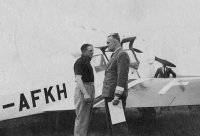
© The Royal Aero Club [0129-0039]
Before the 1936 Schlesinger Race to Johannesburg, he predicted: "It is my opinion that the pilot of the aeroplane which gets there in under forty-eight hours will deserve just about the biggest bunch of bananas ever found.
Having got lost myself many times down this route when flying without wireless, I fully expect to do so again, and the pilot in this race who can honestly say at the end that he was sure of his position all the time will either be very lucky, very clever, or have a queer idea of honesty."
From 1939 to 1946, Chief Test Pilot for Miles Aircraft, living in Sonning, Berks; in July 1943 he was reported to have "improved considerably and to be well on the way to recovery, after he contracted a chill when captaining his works cricket team. "
Won the Manx Air Derby in 1947, still flying a Miles Hawk; three circuits of the island at 181 mph.
d. 20 Jun 1968 - Alderney, Channel Islands.
-
Rowley, Herbert Victor
Flt-Lt Herbert Victor Rowley 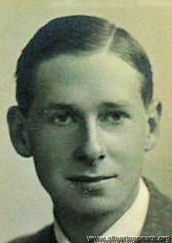
photo: 1916, when a Flight Sub-Lieut in the Royal Navy, aged 19
born in Derbyshire; WWI ace (9 victories)
Air Commodore in WWII, in India and Burma
-
Runciman, Walter Leslie
Hon Walter Leslie Runciman OBE AFC 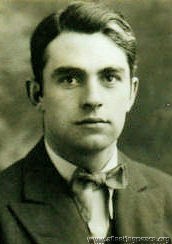
photo: 1928, aged 28
2nd Viscount Runciman of Doxford, from Newcastle-upon-Tyne; after Eton and Cambridge, joined his dad's shipping firm, then Imperial Airways. First Director-General of BOAC, Commodore of the Royal Yacht Squadron, OBE, etc, etc; died 1989
His sister, Margaret Fairweather, was killed in WWII serving in the ATA. See
https://www.ata-ferry-pilots.org/index.php/category-blog-1940/81-fairweather-margaret-mrs
-
Sayer, Phillip Edward Gerald
F/O Phillip Edward Gerald 'Gerry' Sayer 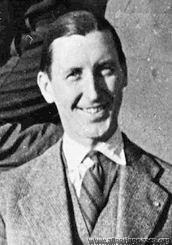
The first British pilot to fly a jet fighter, in 1941; killed in 1942 in a flying accident in Northumberland.
-
Schreiber, Derek Shuldham
Mr Derek Shuldham Schreiber 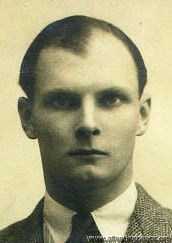 1929, when an Army officer (11th Hussars), aged 25
1929, when an Army officer (11th Hussars), aged 25'From Suffolk. Enjoys polo, hunting, shooting and other sports'.
Later a Brigadier:
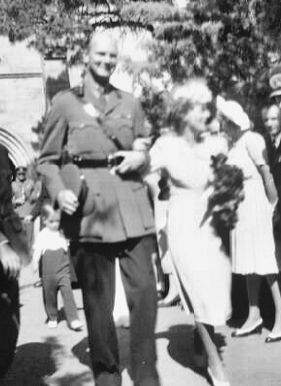
Brigadier Derek Schreiber, Chief of Staff to the Governor General and Viscountess Clive, Lady in Waiting to the Duchess of Gloucester leaving St. John's Church after their wedding, Canberra, 24 October 1945 - Trove
d. 1972 and is buried in Marlesford, Suffolk.
-
Scott, Michael David Llewellyn
Mr Michael David Llewellyn Scott 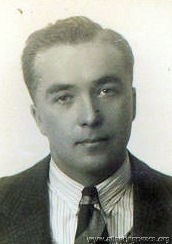 1930, aged 24
1930, aged 24b. 12 Sep 1906 in Eton, Bucks.
B.A. Cantab. and an 'Old Uppinghamian'. In 1930, a solicitor from Stoke Poges, if you hadn't already guessed :-), and, for a while, v. famous in the Skegness area...
In 1930, after competing in the King's Cup, he crashed near Skegness when the wheels of his D.H.60X Moth G-EBXG caught a wire fence. He jumped clear, but his mechanic (Howard), who was still strapped in, was 'injured about the head'.
May 1932, he had a terrifying ordeal (a bit like General and Mrs Lewin in the Sudan swamps, but even worse) in the remote reaches of The Wash; "CRIPPLED 'PLANE ON SANDBANK SET ON FIRE TO ATTRACT ATTENTION - HULL TRADER TO RESCUE"
"Captain (sic) M. D. L. Scott, secretary of the Skegness Aero Club, was flying with a passenger named Tingall, from Skegness to Hunstanton, when his 'plane developed engine trouble. They were about halfway across the Wash, and he was compelled to a make forced landing on a sandbank which was uncovered, as it was low tide... they made an effort to swim the five miles to shore, but the current proved too strong. They then tried to attract attention by setting fire to the 'plane. Later the flames were noticed by a small cargo boat named Lizzie and Annie, which came alongside and took Captain Scott and his passenger on board. "
Only just in time, too - the tide was rising fast... only the engine of the aeroplane remained unburnt... Gosh!
By 1933, he was offering to take sun-starved midlanders to be braced up a bit in Skegness; 25 bob return from Nottingham or Leicester, 35 shillings from Birmingham: "Nottingham people will be able to fly to Skegness again this summer at fares which will actually be cheaper than the first-class railway rates. This enterprising venture, which was inaugurated last year, is to be resumed again at Easter on a very much bigger scale... The service is to be conducted Mr. M. D. L. Scott, of Eastern Air Services, Skegness".
The Eastern Air Transport Company carried 30,000 passengers in the 4 years to 1933 without serious incident.
In November 1934, the Western Daily Press reported thus: "FOUND: AN AEROPLANE. A police constable, while on duty in Pinner, Middlesex, yesterday, found a monoplane in a field. No one seemed to know how the monoplane got there, and the constable began to make inquiries. The machine appeared to be a privately owned one, and was in good condition save for some slight damage to the undercarriage. The monoplane bore the marks G-AAPY and inscribed inside the fuselage was the name "M. D. L. Scott, Skegness." Further inquiries by the officer among the farm hands and the owner of the farm, Mr Hall, showed that someone saw an aeroplane land in a field on Wednesday afternoon. From that time until the constable discovered it yesterday it has been completely unattended, and, far as the police know, unclaimed. A Mr L. Scott, an airman, operates a private aerodrome and club at Winthorpe, a mile or so from Skegness. Pinner police were last night in communication with the police at Skegness."
[G-AAPY was a Desoutter I, belonging to Michael. It was, indeed, written off in November 1934.)
He then turned to golf in the late 30s - winner of the 'Witt Cup' in 1938.
Married firstly to Marguerite; their son, Roderick, was born in December 1943. By then, he was a Flt-Lt (RAF Volunteer Reserve) in Oxford.
However, by 1948, when he married Miss Patricia Collette Thomas (from Bude, Cornwall) in Zurich, they lived at 400 East 57th St, New York.
Describing himself as a 'Sales Manager', he travelled (first class) from Durban to Southampton in February 1959, intending to stay a couple of months with the Duke of Somerset, Maiden Bradley, Wiltshire. Like you do.
-
Slatter, Leonard Horatio
Sqn-Ldr (Sir) Leonard Horatio Slatter KBE CB DSC DFC 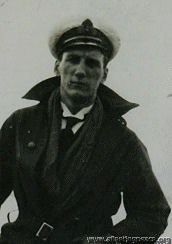 1916, when a Sub-Lieut in the RNVR
1916, when a Sub-Lieut in the RNVRborn in Durban, S Africa; in charge of the High Speed Flight in 1927; later Air Marshall Sir Leonard, C-in-C Coastal Command 1945; died 1961
Full story here: Leonard Slatter - Wikipedia
Here is a contemporary video of his flight to South Africa in 1929, (which includes footage of Adelaide Cleaver and Donald Drew's flight (see Cleaver, Adelaide Franklin) and that of Owen and Muir's accident in their Vickers Vellox on their way to Australia - see England-Australia Flights)
If your connection is too slow to stream it without stuttering, you can download it here (it's 265 Mb):
-
Spooner, Winifred Evelyn
Miss Winifred Evelyn Spooner
Royal Aero Club Certificate No. 8137 (11 Aug 1927)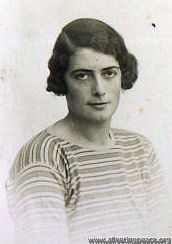 1927, aged 27
1927, aged 27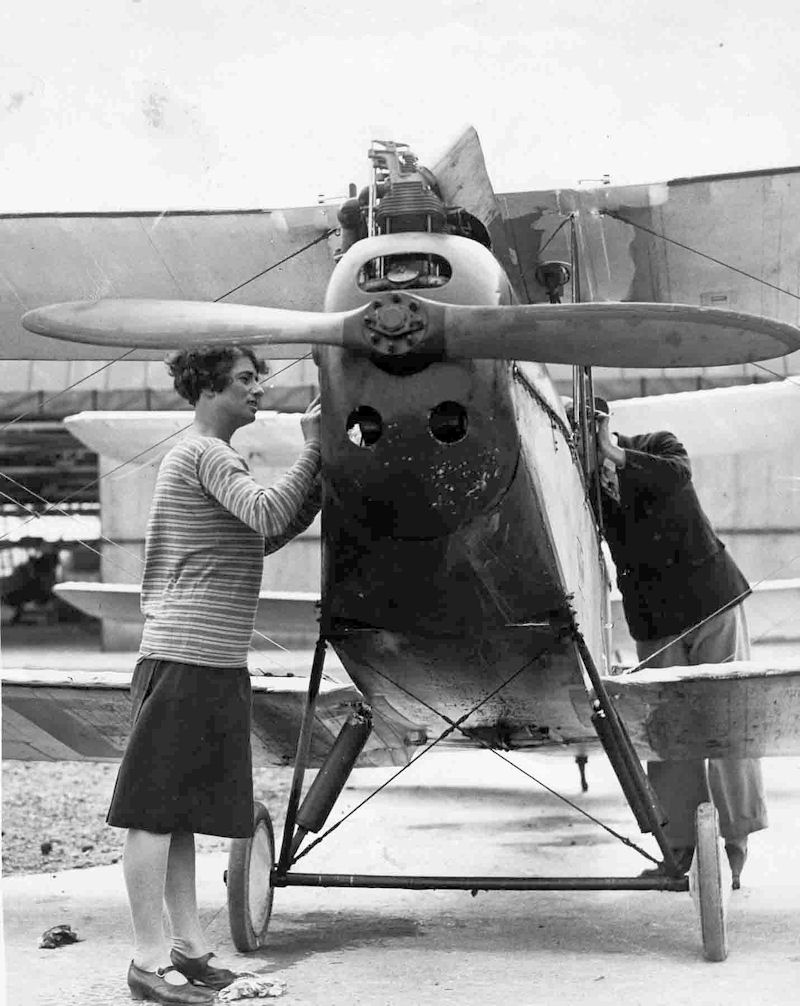
'Bad luck Wimpey' was one of the best-known women aviators of the time, and the one generally regarded as the best. She was awarded the International League of Aviation's Trophy for women aviators in 1929, and in 1930 Capt C D Barnard described her as 'the finest woman pilot in the world' (He went on to say that Lady Bailey was regarded as the 'second finest airwoman in the world', and we don't know what she thought about that...)
Learnt to fly in 1926 and took it 'more seriously than most' - in her first race in April 1928, she won the Suffolk Handicap (21 miles at 78mph), ahead of Neville Stack and four other male rivals; she won the 'heavy' category in the Round Europe Contest for Touring Aircraft in 1930 - covering 4,700 miles at 102mph, ("a very fine performance indeed", said The Times) and also competed in the Ladies event at Reading (May, 1931) - the other competitors were Amy Johnson, Grace Aitken, Pauline Gower, Dorothy Spicer, Susan Slade, Gabrielle Burr, Christina Young, and Fidelia Crossley - a historic gathering indeed.
Photo here
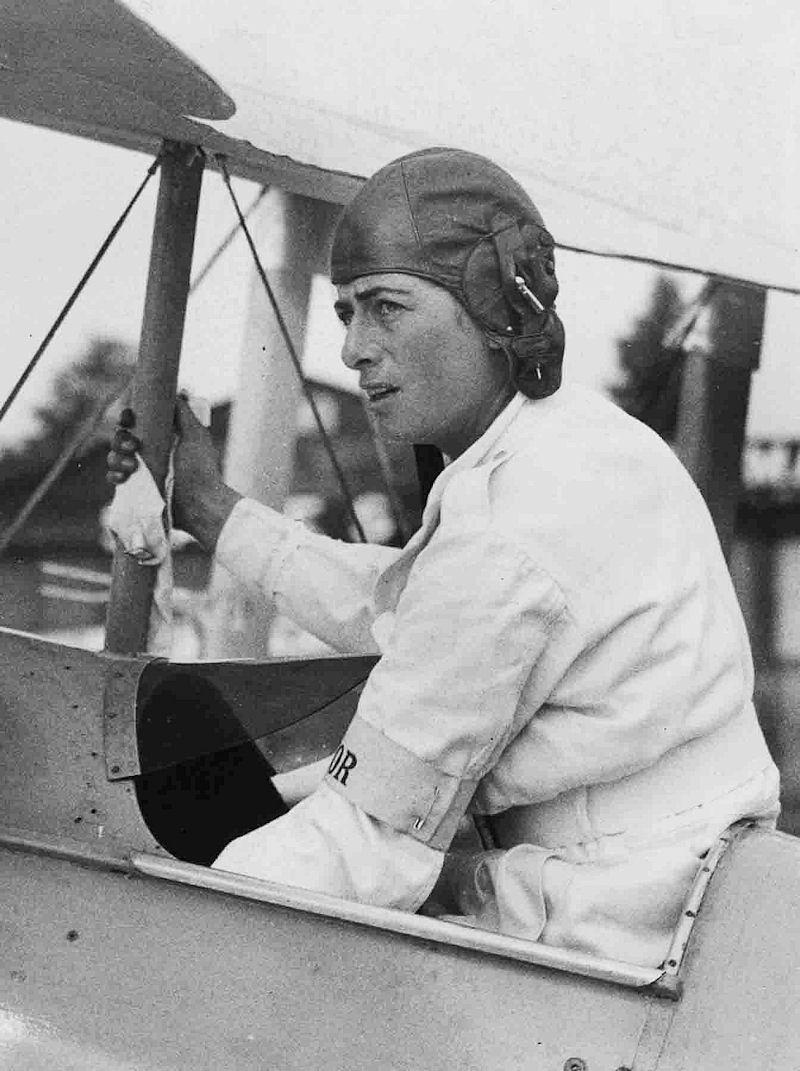
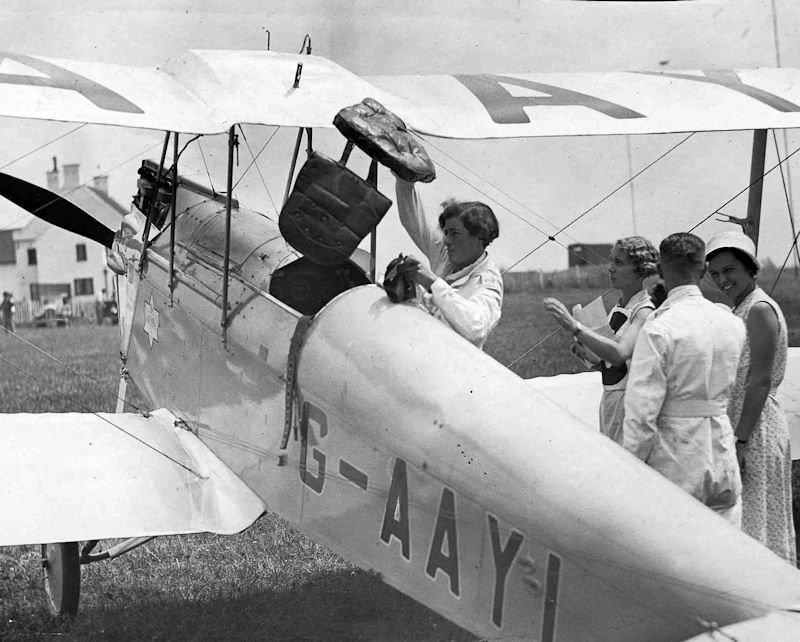
She soon took her 'B' (Commercial) Licence, and at one stage was the only professional woman pilot in the country.
In September 1927 her first flight abroad was to Venice to support the British Team in the Schneider Cup in Venice. Alan Butler (with Peter Hoare as passenger), and Hubert Broad, who took Maia Carberry, also went and, in case you were wondering, "Mrs. Carberry wore a pale blue leather flying helmet to match the colour of her Moth aeroplane."
She soon became regarded as 'one of the few women who matter in the air world'; in March 1928, when King Amanullah of Afghanistan was on a state visit to London, he inspected "the latest types of Imperial Airways passenger machines and a number of small Moth machines in private ownership. He carried on, through an interpreter, an animated conversation with Miss Winifred Brown, of Manchester, and Miss Spooner, of London, both of whom own and fly small two-seater machines."
In the 'Woman's World' section of the Inverness Courier of April 1928, this description of Winifred appeared: "[she] has not flown for very long, for it was only about three years ago that I knew her in Cologne, when she then drove, instead of an aeroplane, a two-seater car, through the crowded streets of Cologne, at a speed which most people would have been terrified to attempt. She was always, however, extremely cool and composed, and though her passengers were sometimes nervous she never seemed so. She was always very sporting, and played an excellent game of tennis. A good-looking, typically English girl, she made many friends among the British army in Cologne when doing voluntary work with the Y.M.C.A. there. [Winifred was with the 'Army of Occupation' in Germany at the time]"
She did have what she later described as her 'greatest air thrill' on Marlborough Common in May 1929; "she had been taking passengers up all day when, after one flight, she said she was not quite satisfied with the controls, and refused to take the next man until she had attended to the aeroplane. After doing so she started the propeller, and as she walked away from it the machine suddenly moved forward. Pluckily, Miss Spooner jumped and caught hold of the wing, her idea being to clamber into the cockpit and stop the engine. The machine quickly gathered speed, and she was dragged 40 or 50 yards [she later reckoned it was about 30 yards], when to the horror of the crowd the plane turned and buried its nose in the ground, hurling Miss Spooner some distance. She was unconscious. Doctors were sent for and she was taken to hospital. 'We thought she must have been killed,' an eye-witness told our representative."
She was taken to Savernake Hospital suffering from a sprained wrist, cuts, and slight concussion.
She does seem to have had quite a few run-ins with the local Constabulary; firstly in January 1929 for failing to keep her Alsatian dog under proper control (it had attacked another dog which "had no chance"), then in August 1929 for failing to produce a car driving licence (she said she had forgotten about it and flew to France the following day); then in 1931, she was fined £35 for leaving her motor car unattended and for failing to have lights on it. When she was told that she would be reported, she said: "I am used to it." A police-superintendent said there were no previous convictions recorded against her, as far as Reading was concerned. The Chairman then asked 'And none in the air? She replied 'There are no policemen in the air. That is why I like it.'"
I'm certainly sorry I missed her talk, given in April 1928 at Harrods in Brompton Road, on "Flying as a New Delight for Womankind". Later, in the early thirties, she wrote for "Good Housekeeping" on, of course, "Flying for Women", alongside such luminaries as John Galsworthy, Kate O'Brien, and Hugh Walpole.
.jpg)
September 1929 saw her accompanying NFS's chairman Freddie Guest (q.v.) to Nairobi, to inaugurate an air taxi service and give flying lessons. They took 3 aeroplanes with them, and flew them back (via South Africa) in February 1930.
She and E C T 'Cecil' Edwards tried to fly a Desoutter to Cape Town and back in December 1930, but this expedition ended up in a forced landing in the sea off southern Italy; Cecil and Winifred had to swim a couple of miles to shore.
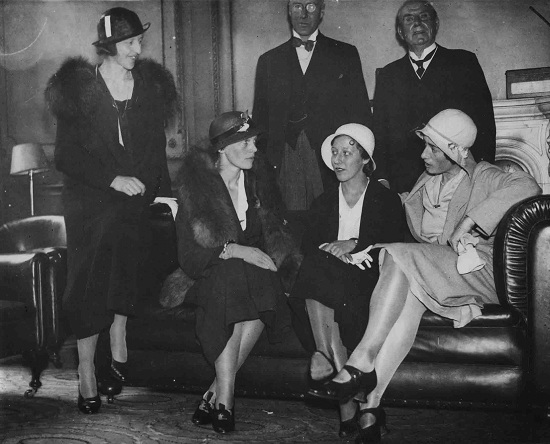
She regularly competed in the King's Cup - coming 3rd in 1928 - and was a guest at Amelia Earhart's reception at the Royal Aero Club in May 1932.
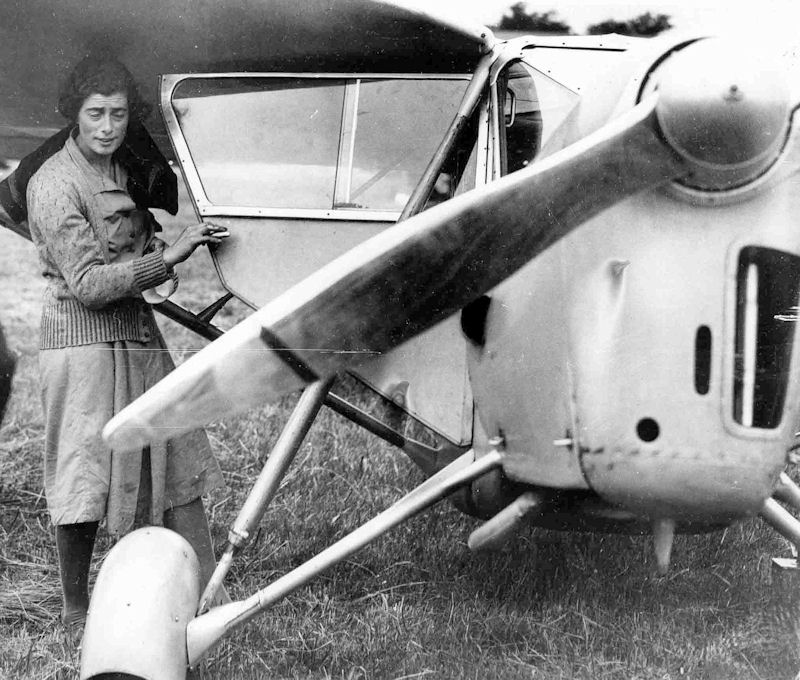
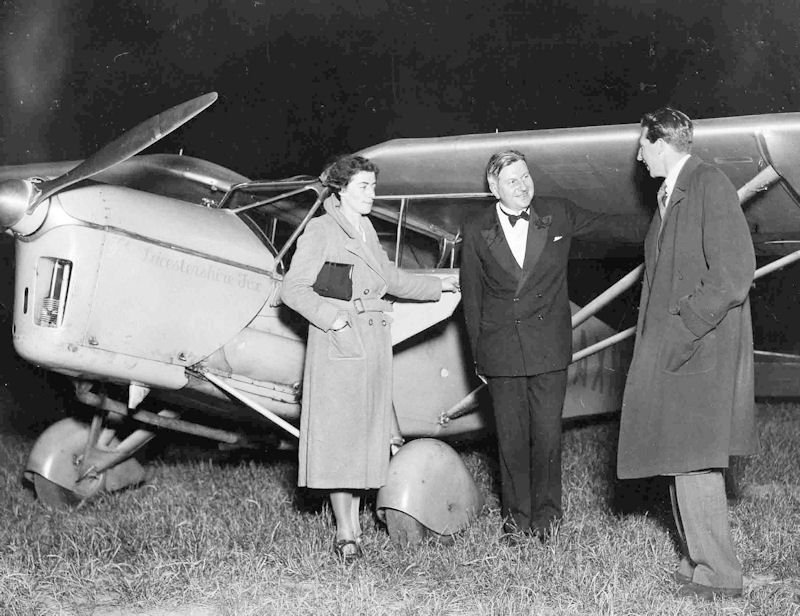
She was personal pilot to Leicestershire M.P. Lyndsey Everard from February 1931 - they are seen here with Nigel Norman.
And then, suddenly, on 13 January 1933, she was dead - not in an air crash, but as a result of a cold which rapidly worsened into pneumonia. Only few days before, in conversation with a friend, she had mentioned that her mother had died from influenza in 1918. "The deaths of both mother and daughter occurred with the same suddenness."
They are buried together in Hinton Parva: see http://www.earlyaviators.com/espoone5.htm
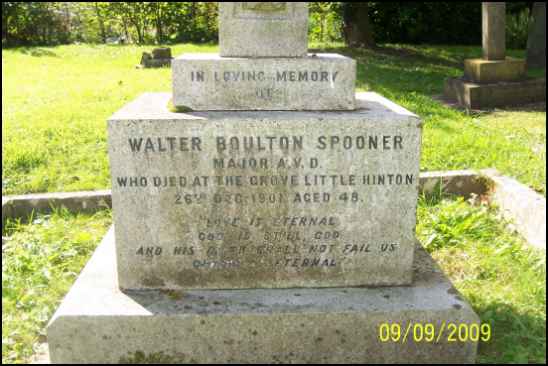
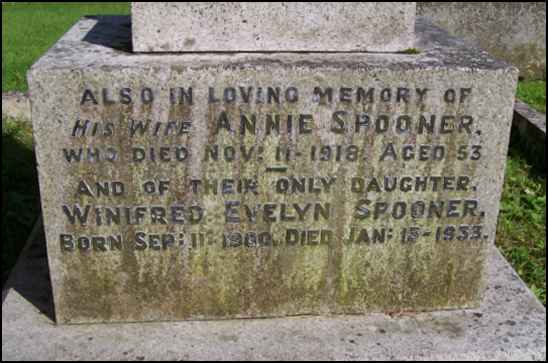
She left £1,357 0s 8d, and her brother, Capt. Frank Vivian Spooner, Indian Army (retd) was appointed administrator. She hadn't got round to writing a will.
There is a scholarship in her memory at Sherborne School for Girls.
"In the passing of Winifred Spooner the world has lost a great woman... she stood out as a woman of indomitable courage".
Winifred owned:
a 1926 DH.60 Moth (G-EBOT),
a 1928 DH.60G Gipsy Moth (G-AAAL, which she sold to Elise Battye);
a 1930 Desoutter IID (G-ABCU - this is the aeroplane she and E.C.T. Edwards ditched in the sea off Naples in December 1930), and later
a 1932 Breda 33 (G-ABXK), which was sold in Italy just 3 months before her death.
Winifred's brother Tony was chief flying instructor at the Montreal Flying Club in 1931. He was killed in March 1935 in Egypt when piloting a D.H. 84 Dragon, SU-ABI belonging to Misr Airwork, when it was caught up in a sandstorm and both engines failed.
-
Stack, Thomas Neville
Capt Thomas Neville Stack 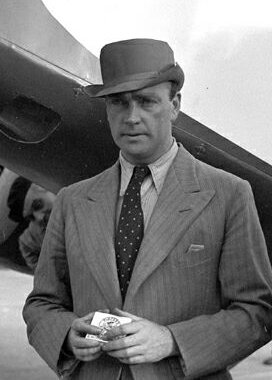 1934, aged 38
1934, aged 38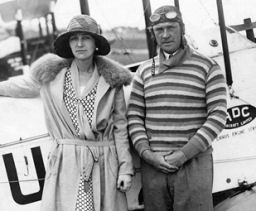
RAeC [0312-0087]
b. 1 April 1896; universally known as 'Stacko'
RFC in WWI, then became a familiar figure in aviation circles during the 1920s - in 1926 he and Bernard Leete made the first flight from England to India in two DH. Moths, one of several record-breaking flights.
He and J R Chaplin tried to fly to Australia and back in 1931, but had to turn back at Constantinople, Turkey, with carburettor trouble; later in the year the same pair attempted a flight to India and back, but again turned back with mechanical problems.
He was appointed 'Air Superintendent' of Iraq Airwork Ltd in 1933, and flew their first machine (a Spartan Cruiser) there via Cairo in 1933. Shortly afterwards, he flew 2 doctors and a nurse out to India, to perform an urgent operation on a Nepalese princess.
Late 1933 found him testing the Airspeed Courier - which is probably where he met Sydney Turner - and was widely expected to fly it in the MacRobertson Race. A month before the race, he broke (his own) London-Copenhagen record in a Miles Hawk, which is perhaps why he was too busy to inspect the Viceroy properly....
He turned up for the MacRobertson Race looking very tired and drawn - Alan Goodfellow described him as looking 'over-trained, physically', and Neville Shute Norway said he was "an exhausted and a worried man".
Shortly after the race, he was appointed Air Superintendent and Manager of Hillman's Airways; after that became part of British Airways he spent time in Turkey, advising them on civil aviation.
He was killed when run over by a lorry in Karachi, India on 22nd February 1949, aged 52. At first, the Karachi Police said he had committed suicide but, while agreeing that he was 'on the verge of a nervous breakdown', the inquiry decided that the cause of death was actually an aneurism of the aorta, and he would have died anyway.
Neville was "always very good company. He was never happier than when singing a song and strumming on his banjo."
-
Strange, Louis Arbon
Lieut-Col Louis Arbon Strange DSO MC DFC 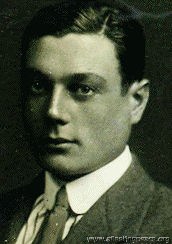 1913, when a farmer from Dorset, aged 22
1913, when a farmer from Dorset, aged 22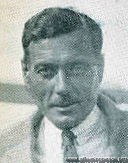 1930, aged 39
1930, aged 39'Flying Rebel'; WWI pilot and inventor; later Director of Spartan, Simmonds and Whitney Straight companies.
He was "none other than the famed R.F.C. pilot who, fighting a German at 8,000ft over Ypres in 1915, suddenly found his Martinsyde out of control, was flung out of his seat, and spun down 5,000 feet hanging from the Lewis gun mounting. He eventually got the machine under control with his feet."
Bar to his DFC in June 1940, while in the RAF Volunteer Reserve: "P/O. Strange was detailed to proceed from Hendon to Merville to act as ground control officer during the arrival and departure of various aircraft carrying food supplies. He displayed great skill and determination whilst under heavy bombing attacks and machine gun fire at Merville, where he was responsible for the repair and successful despatch of two aircraft to England. In the last, remaining aircraft which was repaired under his supervision, he returned to Hendon in spite of being repeatedly attacked by Messerschmitts until well out to sea. He had no guns in action and had never flown this type of aircraft previously, but his brilliant piloting enabled him to return."
Wing Commander in WWII, awarded OBE and US Bronze Star; returned to farming and died in 1966.
-
Summers, Joseph
F/O Joseph 'Mutt' Summers 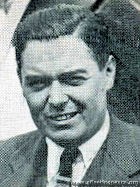 1930, aged 26
1930, aged 26'Mutt' Summers, chief test pilot for Vickers and Supermarine. Flew the Spitfire prototype on its first flight. Called 'Mutt' because he liked to pee on or near his aeroplane before taking off; is that too much detail?
Still has the most flying hours of any test pilot in the world.
d. 1954.
-
Sutcliffe, W H
Mr W H Sutcliffe 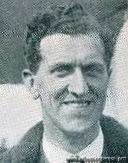 1930
1930Instructor at Midland Aero Club (as was Tommy Rose), the 'energetic' Mr Sutcliffe
-
Symondson, Francis Stanley
Mr Francis Stanley Symondson MC 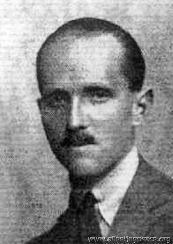
b. 27 Mar 1897 in Sutton, Surrey but living in Fowey, Cornwall; WWI ace (12 victories).
Went to Italy in WWI flying Camels with 66 Sqn, and was shot down once in Belgium and twice in Italy.
Despite being over 40 when WWII broke out, Francis joined the RAF as a Flt-Lt and then in June 1943 joined the Air Transport Auxiliary (ATA).
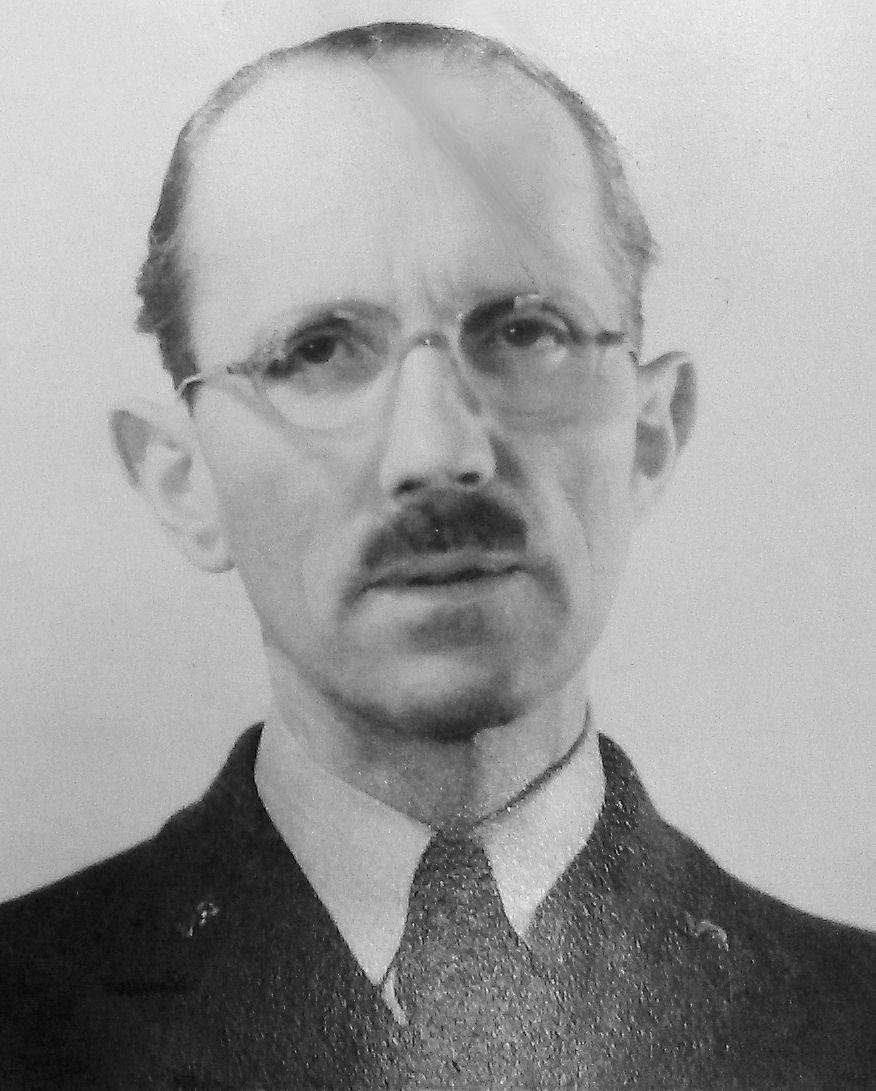 ATA, 1943
ATA, 1943See https://www.ata-ferry-pilots.org/index.php/category-blog-1943/822-symondson-francis-stanley
-
Thorn, Sidney Albert
F/O Sidney Albert 'Bill' Thorn 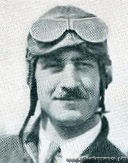 1930, aged 29
1930, aged 29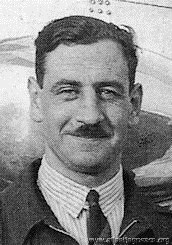 1947, aged 46
1947, aged 46Joined the RAF in 1925 (RAE Farnborough from 1927) after a stint in the Coldstream Guards followed by poultry farming in Surrey, then took over from Neville Stack (him, again) as chief test pilot for the Aircraft Disposals Company.
Charter pilot at Brooklands; sometime middleweight and light-heavyweight boxing champion, and a major in the Home Guard. Avro's test pilot from 1934.
Killed in the prototype Avro Tudor, (together with chief designer Roy Chadwick), on 23rd August 1947.
[With thanks to John Falk, who is Roly's (q.v.) son, and Bill Thorn's grandson]
-
Tomkins, Frederick Basil
Flt-Lt Frederick Basil Tomkins 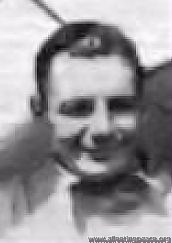 1935
1935b. 21 Jun 1903, Kent
In 1939, a flying instructor living in Winchester, Hants
-
Vlasto, Alexander George
Alexander George Vlasto
Amazingly, there are two different Alexander George Vlastoes... (now what are the chances of that?) Take your pick:
.jpg)
b. 12 Sep 1887 in Calcutta, d. 1935
photo: 1917, when a 2nd Lieutenant in the RFA, aged 20
- or -
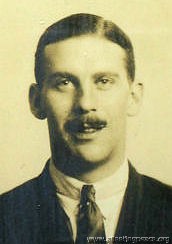
a Merchant from Henley-on-Thames, b. 27 Feb 1904 in Bombay
photo: 1930, aged 26
-
Waghorn, Henry Richard Danvers
Flt-Lt Henry Richard Danvers 'Dick' Waghorn 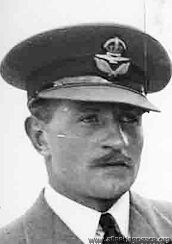 1929, aged 25
1929, aged 25A member of the Schneider Cup winning team in 1929, also a member of the GB skiing team in 1930, and a burly rugby-player to boot.
d. 1931 after bailing out of a Hawker Horsley from Farnborough and hitting a building.
-
Whistler, Harold Alfred
Sqn-Ldr Harold Alfred Whistler DSO, DFC 
b. 30 Dec 1896 - Lincolnshire
Dorsetshire Regt. in WWI, a 'gallant officer of fine judgement and power of leadership'. Later Group Captain.
Killed in the crash of Imperial Airways' ''Hannibal', which disappeared on a flight in the Persian Gulf, 1st Mar 1940; commemorated on the Singapore Memorial.
Page 4 of 5

